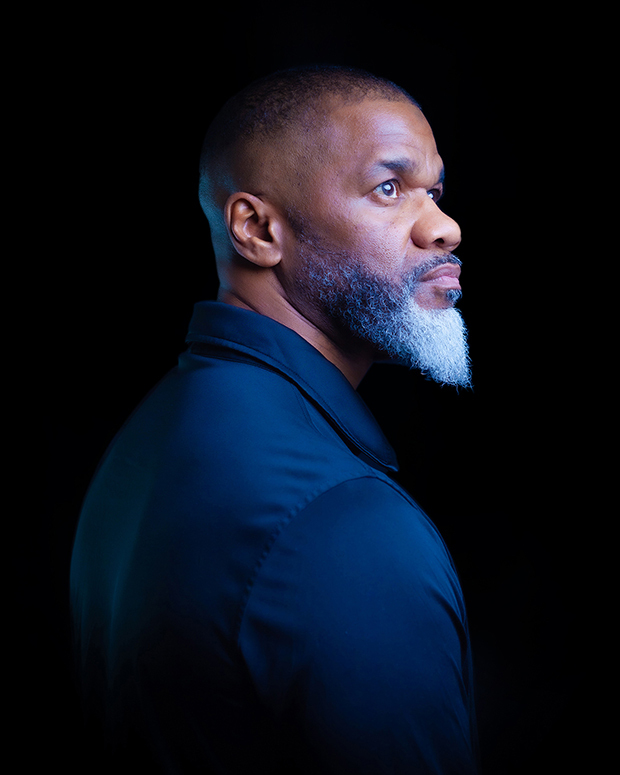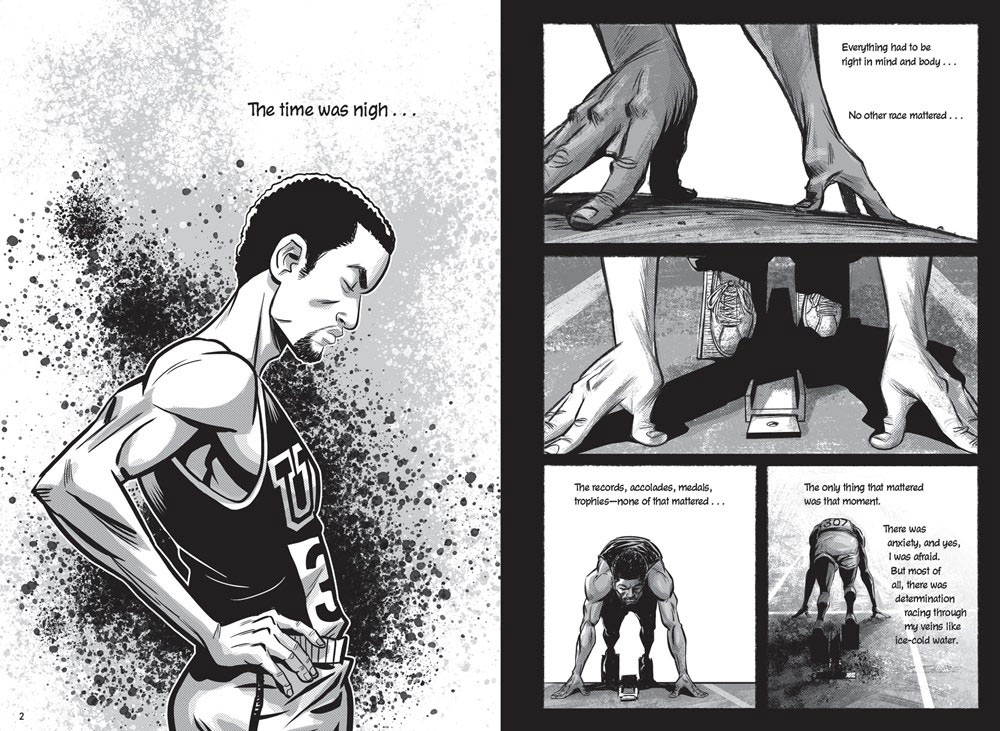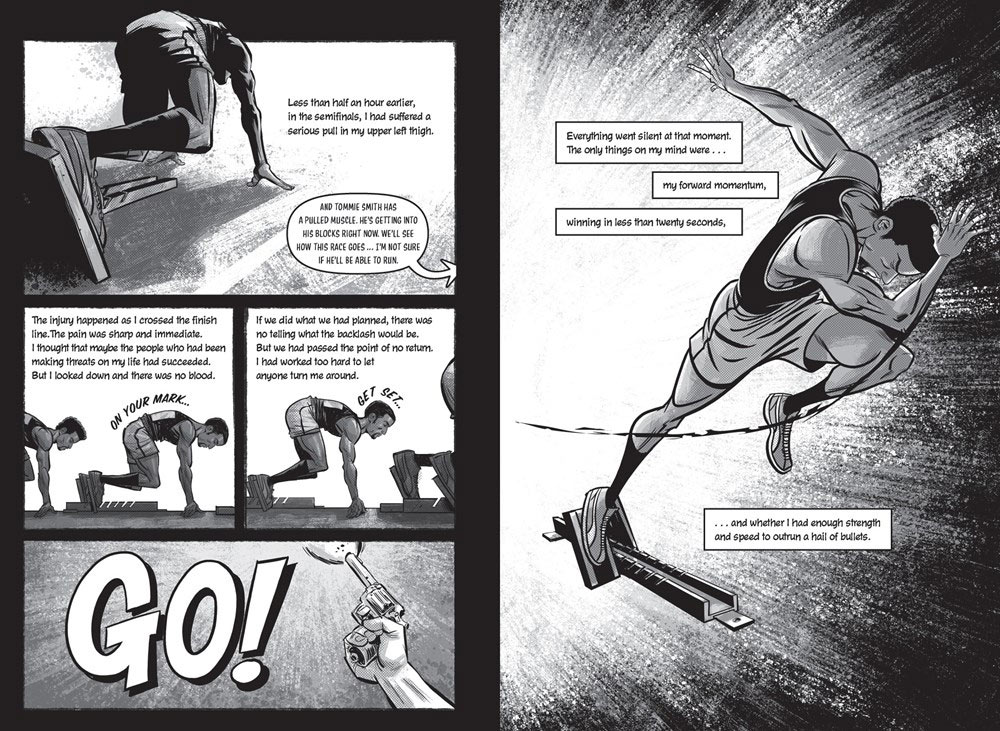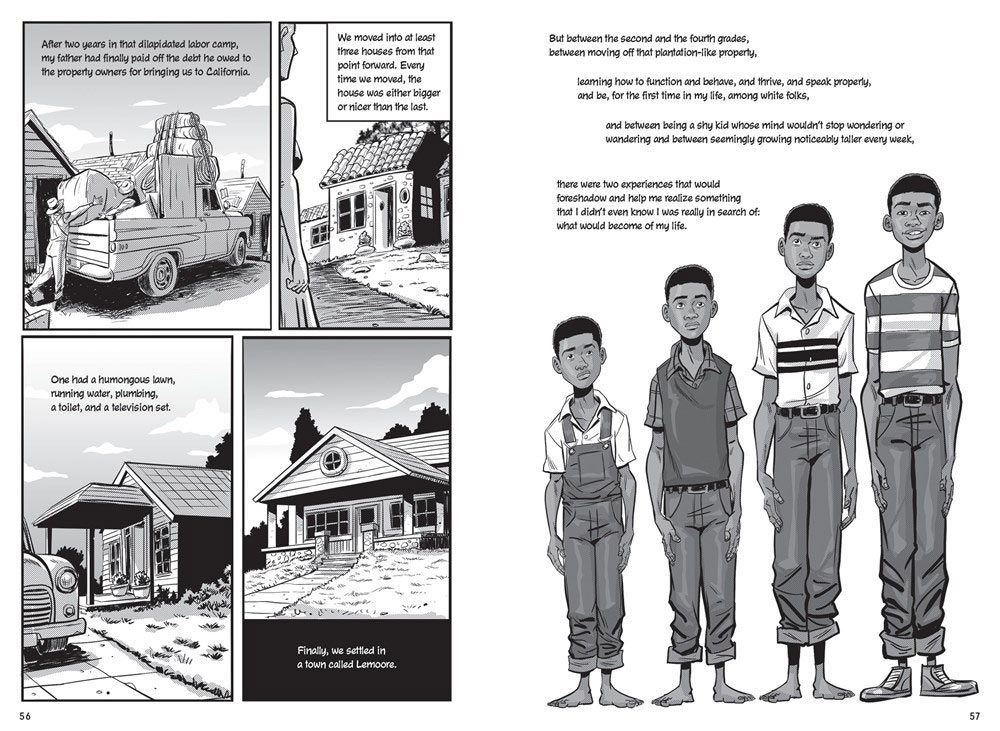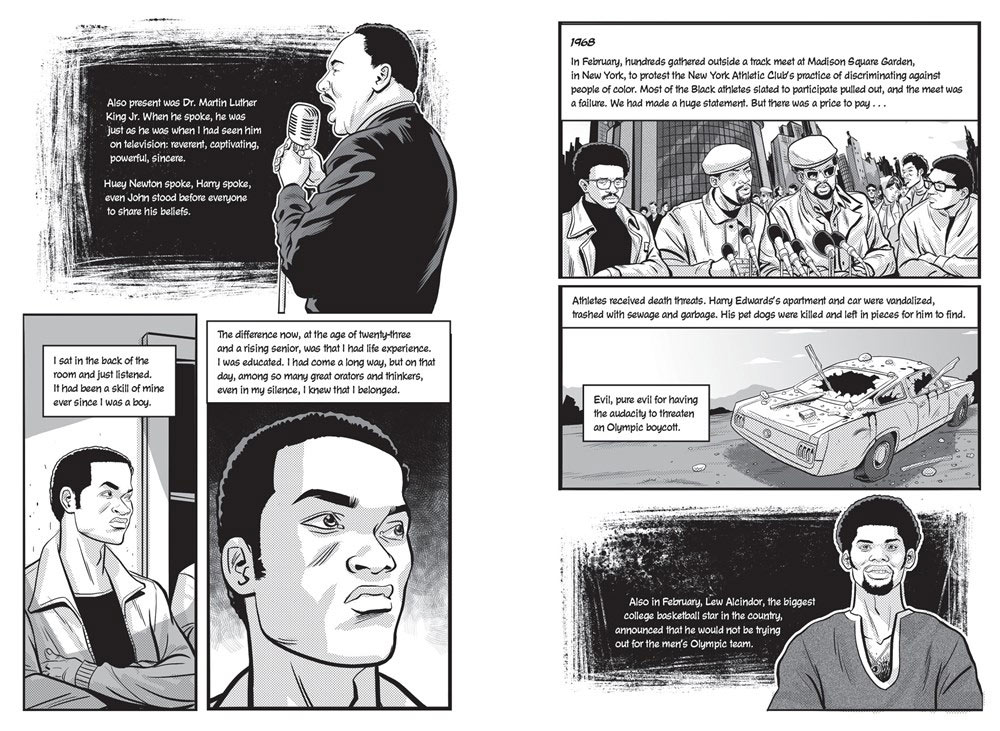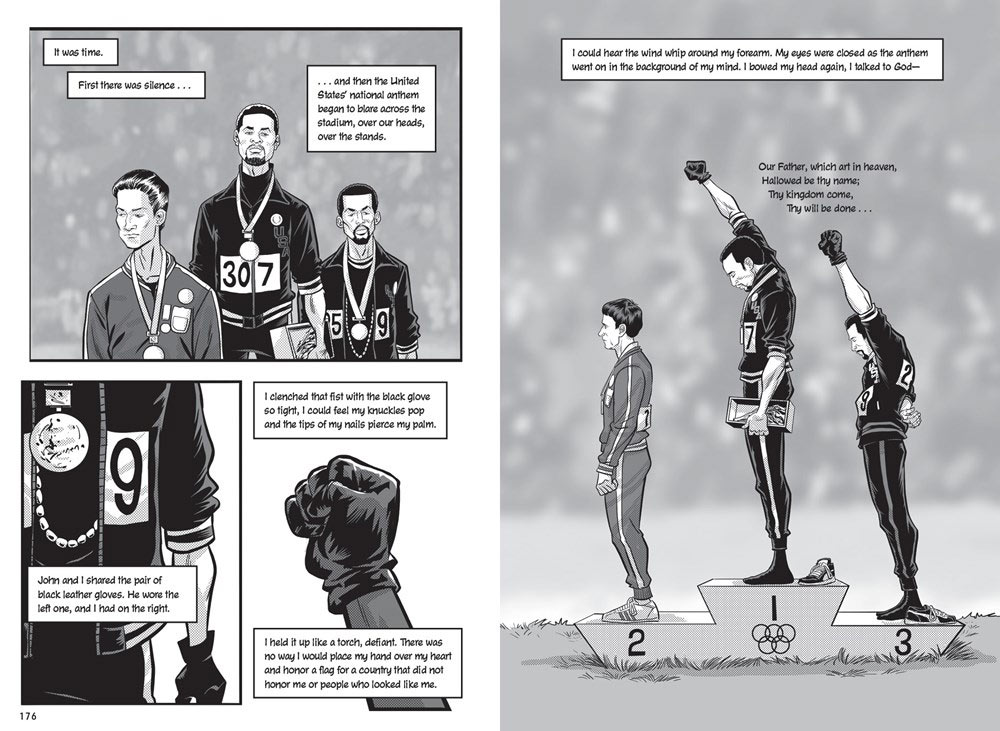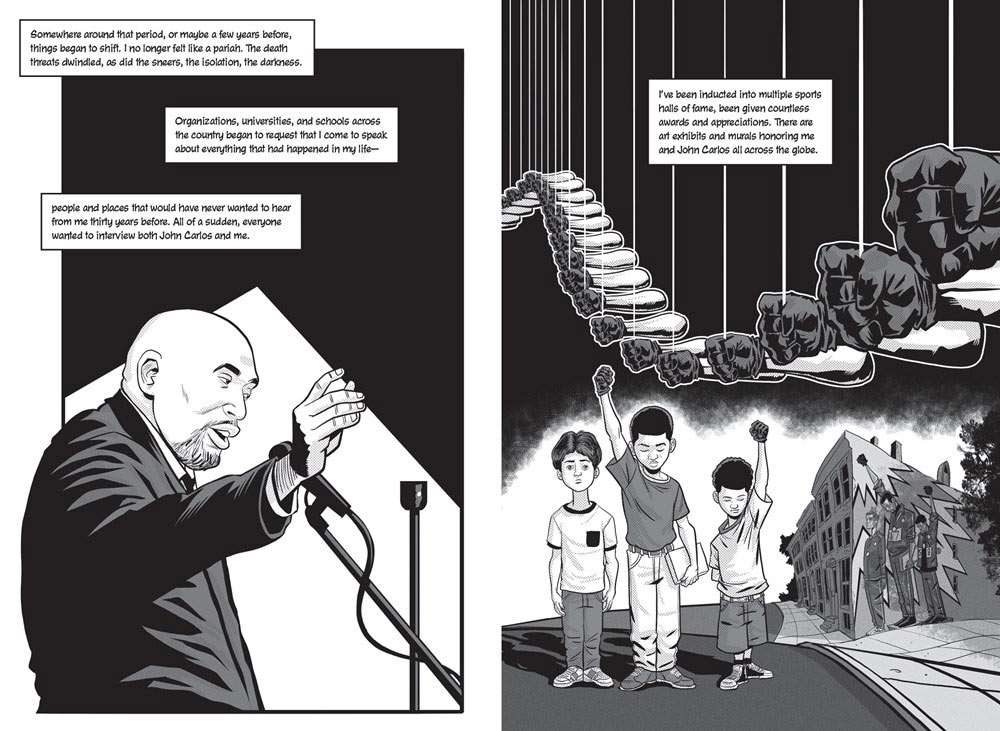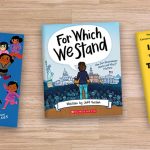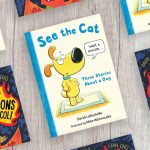One of the twentieth century’s most riveting images is that of two Black athletes standing on an Olympic podium in 1968, with black-gloved fists raised to protest racial injustice. In the graphic memoir Victory. Stand! (Norton, 2022), one of those athletes—Tommie Smith—shares his compelling story with young readers. The book provides illuminating details about his childhood, athletic career, and Olympic experience; and the fallout he and fellow athlete John Carlos faced because they dared to take a stand for justice. The title was named a 2022 National Book Award for Young People’s Literature Finalist and rings with relevance for young people today who continue to ask hard questions about racial inequality.
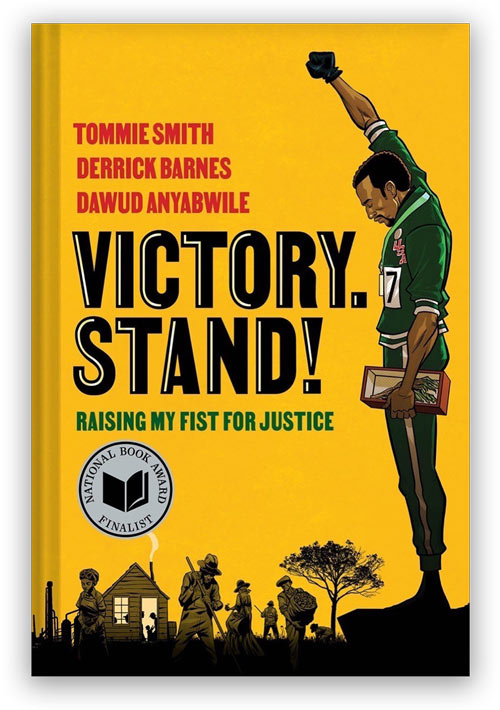
Smith worked closely with two other creative forces to create the book. Derrick Barnes is the author of the picture book Crown: An Ode to the Fresh Cut (Agate/Bolden, 2017), which was awarded both a Newbery Honor and a Caldecott Honor. His other titles include the picture books I Am Every Good Thing (Nancy Paulsen Books, 2020), The King of Kindergarten (Nancy Paulsen Books, 2019), and The Queen of Kindergarten (Nancy Paulsen Books, 2022).
Dawud Anyabwile is the illustrator of the Brotherman comics series as well as books for author Kwame Alexander, including Becoming Muhammad Ali (JIMMY Patterson Books, 2020), Rebound (Clarion, 2018), and the graphic novel versions of The Crossover (Clarion, 2019) and Booked (Clarion, 2022). He also worked with author Nic Stone on Clean Getaway (Crown, 2020) and illustrated Walter Dean Myers’ Monster: A Graphic Novel (Quill Tree Books, 2015).
Here, this creative team talks with Lisa Bullard about the process of crafting this engrossing, real-life story.
Can you talk about the roles you each played, both individually and collaboratively, in creating Victory. Stand!?
Smith: The stand I took in Mexico was, to me, a simple but complex interaction with the viewers on that day, not realizing the trauma it would create because the need to communicate the truth had not been told in such an open, apolitical fashion by the non-expected.
I met with both Derrick and Dawud on individual occasions, prompted by a publicist about the possibility of a book. The name of the book would be obvious, in my mind, because every book written needs to answer “Why write about the subject?” Our communitive collaboration brought three worlds together in an explosion of yesterday and today: the knowledge of the writer, the illustration, and the subject.
The stand I took in Mexico was, to me, a simple but complex interaction with the viewers on that day, not realizing the trauma it would create.”
— Tommie Smith
Barnes: My role as author in creating Victory. Stand! was primarily to study the life of Tommie Smith. Period. I sat at his feet and had great conversations, and took mental and physical notes. Then I had to decide the best format to present his life’s story. A graphic novel just seemed like a perfect fit, seeing how he was once the fastest man on the planet. The movement and pace of a graphic novel seemed inevitable.
Anyabwile: I began my role illustrating the book by first reading the script and then discussing it with Derrick. Afterwards, I had the opportunity to sit with the legend, Dr. Tommie Smith, who gave me a tour of his archives and photo albums so that I could become familiar with his past. This was extremely helpful and vital to me in beginning my first stage of rough sketches. As I was working on it, I was drawn into the story, and I could feel every aspect of it, which makes illustrating that much easier for me.
If a young reader takes away just one message from Victory. Stand!, what do you hope that one message will be?
Smith: Look in the mirror and tell yourself that you are someone who’s great, smile, and pass along the mirror.
Barnes: That they don’t have to come from wealth or prestige, or from a family of civil rights activists, to just stand up. Say something when injustice rears its ugly head, whether that be in your classroom, neighborhood, city, or country. Say something! Educate yourself to the fullest. Learn everything that you can from those books that certain governors are trying to ban. Learn everything that you can that may or may not be taught in your school about the real history of racism, bigotry, and discrimination in this country—and then do something about it. Do something from where you stand that will bring us together as a people.
…just stand up. Say something when injustice rears its ugly head. … Do something from where you stand that will bring us together as a people.”
— Derrick Barnes
Anyabwile: To stand for what you believe in and also to know the value of family and self-pride. Having a strong connection to a higher power is also key to having the strength to stand in your power.
A powerful image is at the heart of Victory. Stand!: two Black athletes raising their fists. Before your involvement with this book, what role did that image play in your own life?
Smith: Before the release of Victory. Stand!, I always thought, “If only I could communicate with someone who could write and draw about my trauma of getting to that stand.” Before this book, stories and articles plagued my life, but raising my fist for justice was not accepted as a cry for freedom and was only sought as a platform for radical inquisitions.
Barnes: To be quite honest, up until I was a teenager, I always thought that two members of the Black Panther Party actually qualified for the 1968 Olympics! But that image alone has always been, in my mind at least, the epitome of resistance, of defiance, of Black Power. They looked like superheroes to me.
Anyabwile: I was born in 1965, so I was three years old when the event took place. However, it was embedded in my memory for as long as I could remember because the image was in our home, and although I never knew the details of who the athletes were or their story, the image itself was impactful. That image was reminiscent of the type of men in my community and the times in which we were growing up, which were about being Black and proud, natural and self-aware.
Tommie Smith’s life is about so much more than just that one moment. What were the challenges you faced in deciding what to include in such a big life story?
Smith: Victory. Stand! is a true story and a story of reverence and deliverance without any angles of the “spirit of truth.” Yes, my life has a wide span, and I hope to continue to communicate and collaborate, with children especially, youth directly, and grown-ups exactly.
Barnes: We could have easily had a series similar to the magnificent March series (March: Book One-Book Three, Top Shelf Productions) about the life of the great John Lewis (shout out to Andrew Aydin and Nate Powell). But I didn’t want to go too deep into how the blackballing and racism destroyed Dr. Smith’s personal and professional life (he never raced again after the Mexico City games). I thought it was more important to make the point that sometimes in life, we make sacrifices, and not just for ourselves or for our loved ones, but for the greater good of humanity. And sometimes you may not recover. But God has been good to Dr. Smith. He not only recovered and stood strong, but he has been able to rebound well enough to tell his side of the story, to tell his truth.
Based on your own experiences, what advice do you have for educators and librarians as they help shape young people’s lives?
Smith: Give attention to the young readers, with direct eye contact and with a positive listening attitude. Ask their first name and help them with information on subject matters.
Anyabwile: When I was young, I did not like to read, but I was stimulated to begin reading through the medium of comic books. That was followed by novels based on topics that I had an interest in, whether it be a genre such as science fiction or simply stories with characters I can personally identify with. I think graphic novels are a great way to introduce reluctant readers to books and reading without strong-arming them to do something that they may not initially feel.
When I was young, I did not like to read, but I was stimulated to begin reading through the medium of comic books. … I think graphic novels are a great way to introduce reluctant readers to books and reading.”
— Dawud Anyabwile
What other advantages do you think there were in presenting this story as a graphic novel?
Smith: It brought vision to both literature and action. The mind and body are a positive collaboration.
Anyabwile: Words are extremely powerful; however, images tell a story immediately even if the viewer glances for a split second. So, the combination of images and words create a powerful imprint on the minds of those who encounter graphic memoirs. It can create curiosity, much like watching a film where you want to know what happens next. A story without graphics can have the same effect; however, pictures can make one who is simply glancing in the direction become intrigued. Some people like to read books without artwork to form their own images; however, there are a lot of people who become immersed in a story just by the images alone.
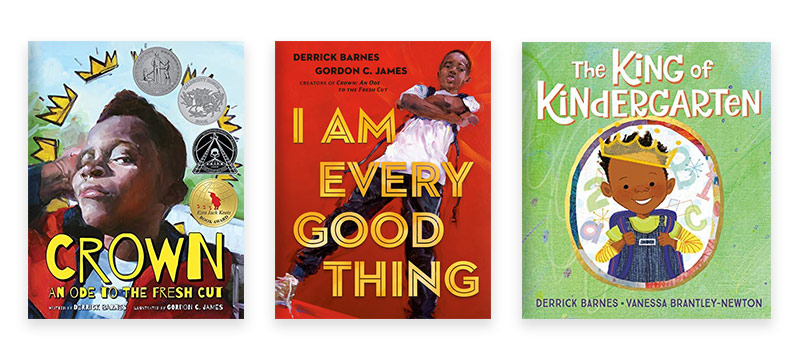
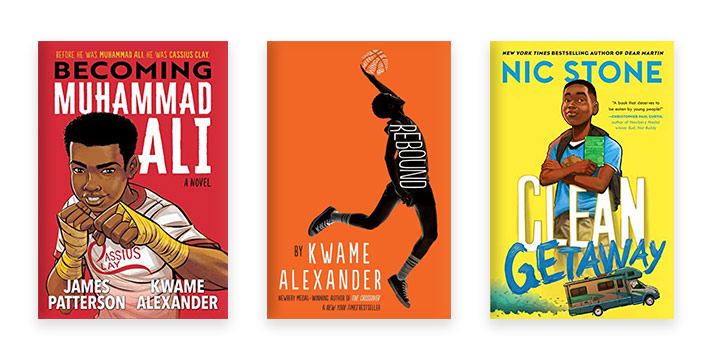
The Black Power fist continues to be an iconic image. Is there anything else you’d like to say about it?
Smith: Yes, the “Black Power fist” for many people represents the 1968 stand only, but the individuals who hoisted that black-gloved appendage went further than for Black people only; it was the Olympic Project for Human Rights, which was inclusive. The global understanding of freedom is obvious, but Black athletes also display traits of courage, commitment, selflessness, and vision.
The individuals who hoisted that black-gloved appendage went further than for Black people only; it was the Olympic Project for Human Rights, which was inclusive.”
— Tommie Smith
Anyabwile: Once again, I grew up in an era where being Black and proud was a part of our daily lives. It is an ongoing mantra which has inspired generations to stand tall. Personally, it always represented freedom and pride for the Black family. So much has been done to break us apart, and the fist represented that call for unity.
What are the best ways for fans to connect with you or follow you on social media?
Tommie Smith: Tommiesmith.com, tommiesmith68, or tsyinitiative.org
Derrick Barnes: derrickdbarnes.com, IG: @authorderrickdbarnes
Dawud Anyabwile: anyabwile.com, @brothermancomix, and @dawudanyabwile
Dr. Smith, would you like to share a final thought?
Smith: Conversation is free, but collaboration is priceless.
Tommie Smith
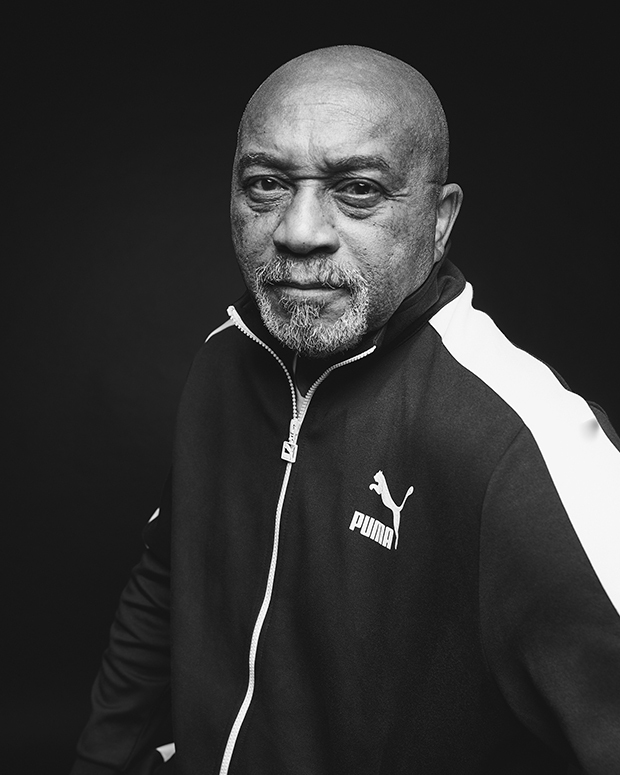
Derrick Barnes
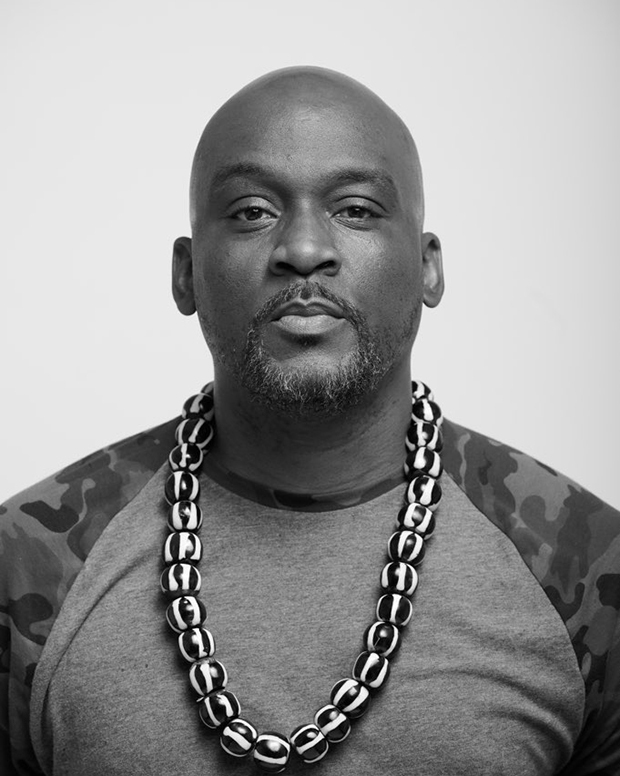
Dawud Anyabwile
